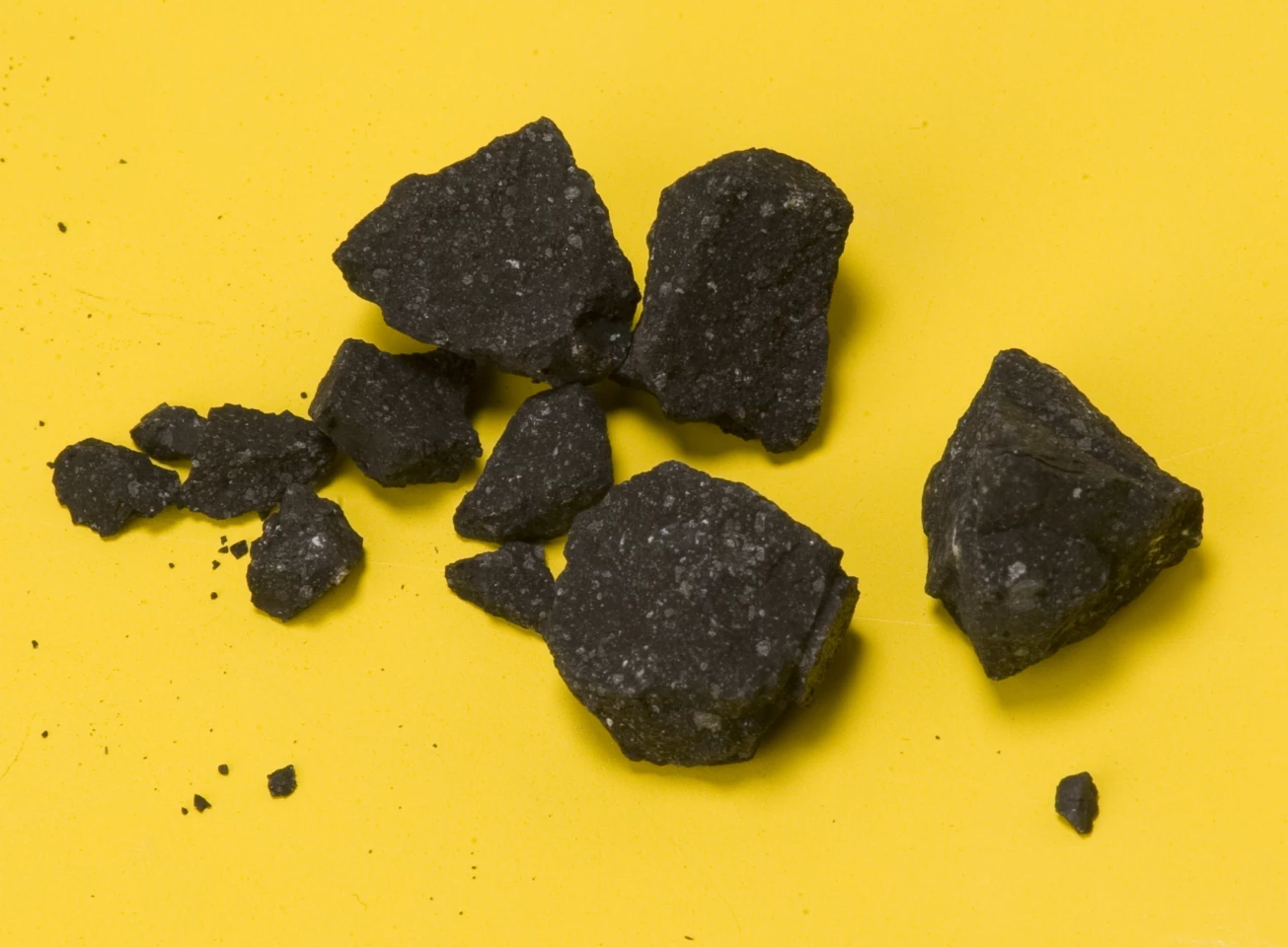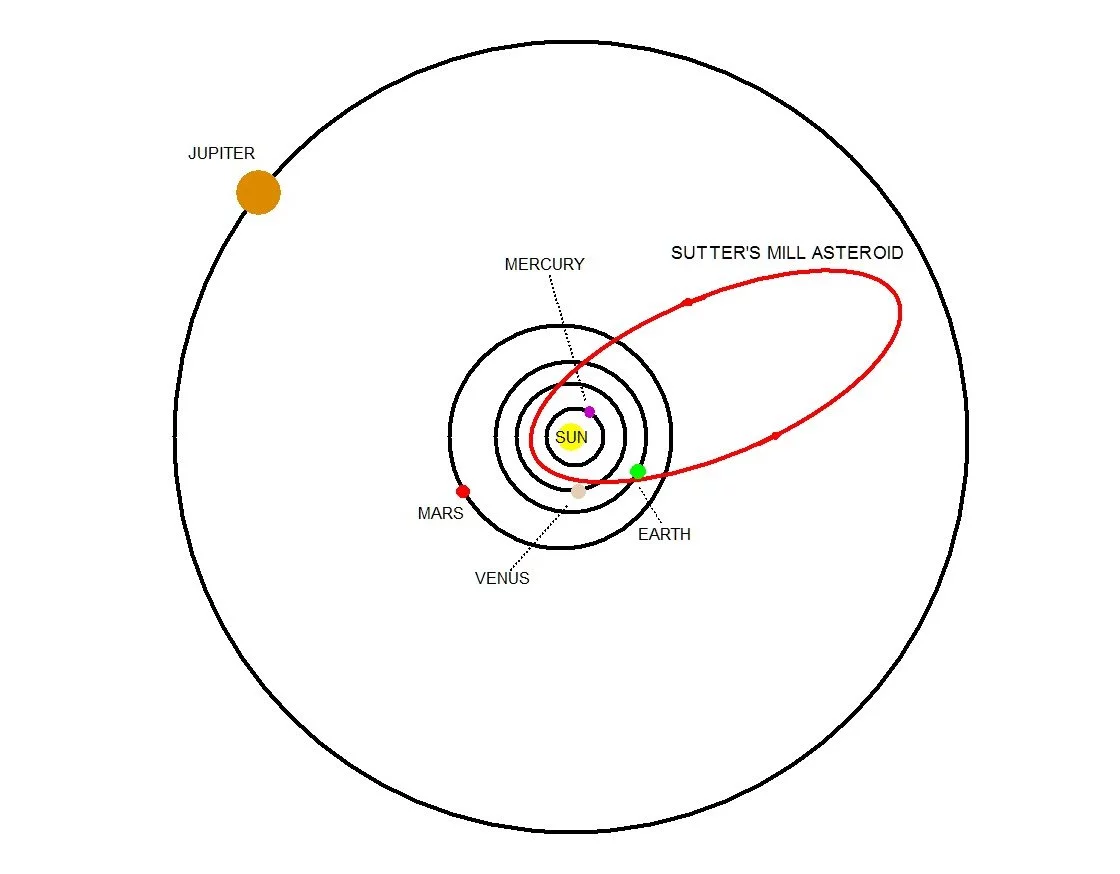At about 14:51 GMT on April 22, 2012, a fireball was seen throughout the western United States, accompanied by a loud booming sound heard over much of California's Sierra Nevada mountains around Lake Tahoe. Scientists have now carried out a thorough analysis of the meteorite and found that it was the fastest meteor ever recorded at 28.6 km/s (64000 mph).
The Sutter's Mill meteorite (now it's official name) was by some definitions a small asteroid, roughly 2.5 to 4 meters (8-13 ft) in size and weighing in the neighborhood of 40 metric tons (88,000 lb). The fireball was described as green, lasting 5 seconds or so, and had a luminosity of magnitude -18 to -20, meaning that it appeared midway in brightness between the Sun and the Moon. It was reported by observers to be bright enough to dazzle the eye and subsequent analysis has found that it was made up of a rare type of carbonaceous chondrite seldom seen before.
"It sounded like a sonic boom but longer,” said Alan Ehrgott, who lives in the Sutter's Mill area. “It seemed to last 45 seconds. It stopped me in my tracks." As a result of its enormous velocity, the asteroid entered the atmosphere with a kinetic energy of about 4 kilotons (compare to the Hiroshima bomb's 12.5 kilotons). The detonation occurred at an altitude of 47.6 km (30 miles) and located some 30 km (18 miles) north of Merced, CA – a largely uninhabited area about 130 km (80 miles) south of Coloma, where Sutter's Mill is located.

A massive recovery effort has resulted in finding 0.9 kg (2.0 lb) of meteorites related to the Sutter's Mill asteroid. The recovery effort was greatly assisted by records of the fall as seen by several weather radars, which allowed analysis of the asteroid's trajectory, and also directly detected a fall of stones near Columa. Three fragments of the meteorite were found just two days after impact – a fortunate circumstance as quantities of highly soluble minerals were found in the recovered material and a heavy rain on April 27 would probably have degraded this valuable mineral.
The recovered fragments had a dark, crumbly texture showing that the asteroid was a primitive carbonaceous chondrite – stony meteorites that contain significant quantities of carbon-containing materials. In particular, it is a CM chondrite, characterized by large amounts of water (~10 percent) and the presence of multiple amino acids, although in smaller quantities than in some carbonaceous chondrites. These amino acids are made up of both right- and left-handed varieties, indicating that they are not the result of terrestrial contamination (amino acids produced by living organisms are entirely left-handed.) This indicates that it is a remnant from the formation of the solar system, virtually unaltered since that time (4.5 billion years ago.) The analysis showed that the asteroid had been subjected to intense solar radiation and cosmic rays for no more than about 100,000 years, so it was probably a recent fragment from a collision in the asteroid belt.
"The meteorite was a jumbled mess of rocks, called a regolith breccia, that originated from near the surface of a primitive asteroid," said NASA's Derek Sears. Some pieces had experienced heating up to 300º C (400º F), a level thought unlikely to be due to the flash of heat they experienced in the atmosphere. The asteroid contained an unusual mineral called oldhamite (calcium sulfide), usually associated with another form of chondrite. This is being taken as an indication that "primitive and highly evolved asteroids collided with each other even at early times when the debris accumulated that now makes the meteorite matrix," according to Mike Zolensky, a mineralogist at NASA’s Johnson Space Flight Center.

The various pictures, videos, and radar tracks of the Sutter's Mill asteroid allowed NASA scientists to determine the orbit it followed before striking the Earth. As shown above, it had an orbit reaching nearly out to Jupiter. It came from the asteroid belt, probably thrown onto its Earth-crossing orbit by Jupiter. That orbit was in a three to one resonance with Jupiter, meaning that the asteroid orbited the sun three times for each revolution of Jupiter.
This video captured by Shon Bollock shows the fireball in motion.
Source: SETI






